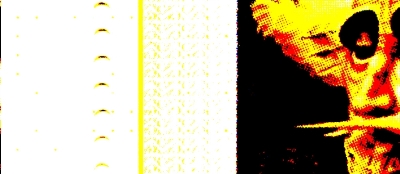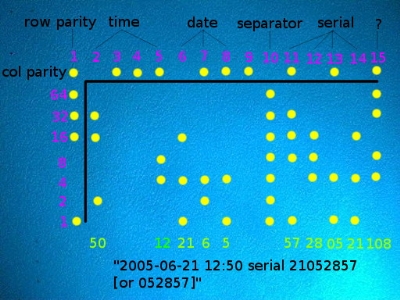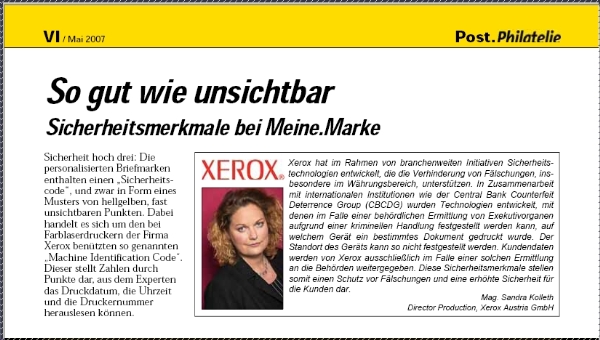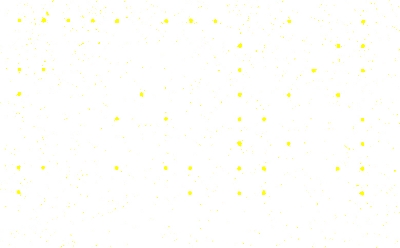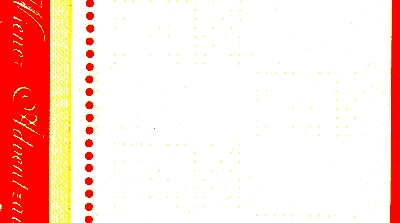E?n aspect was tot voor kort nergens nog gemeld. Als anti-vervalsingsmaatregel misschien niet zo vreemd dat de Oostenrijkse Post daar niets over meldt. Echter ook verzamelaars hadden dit aanvankelijk volkomen over het hoofd gezien.
Over het gehele blok - blokrand en zegels zelf - loopt een zeer grof geel raster bestaand uit punten die ongeveer 1mm van elkaar af staan. Bij schuinopvallend licht goed te zien - uiteraard op de onbedrukte blokranden, maar ook binnen het bedrukte zegel zelf!. Onlangs is bekend geworden dat dit een beveiligingsmaatregel is van de fabrikant van de digitale printer - Xerox. Het gaat om een Machine Identification Code (MIC) waarmee repeterend over het gehele vel met gele punten een 7-bits code wordt aangebracht voor de machine identificatie zelf plus een tijdsaanduiding: jaar, dag, maand, uur en minuut!

One aspect had been overlooked for a long time by most collectors. Maybe not so strange as it turned out to be an anti-falsifiction measure, that the Austrian Post hadn't mentioned it..
Spread over the whole sheet - margins included - a rather rude - dots 1mm apart - yellow screen pattern can be seen when using a magnifying glass and an oblique light source. It appears to be a measure made by the manufacturer of the Xerox DocuColour digital printing machines. The Machine Identification Code (MIC) consist of a 15x8 dot pattern of 7-bits code which has a subcode for the very machine identification code and for the date-time-hour indication.

